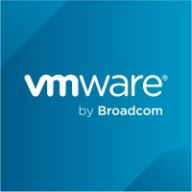

VMware Cloud Director and Morpheus compete in the cloud services platform category. While VMware offers comprehensive features for datacenter management, Morpheus provides greater versatility through third-party integrations and hybrid cloud management.
Features: VMware Cloud Director integrates with virtualization layers to offer datacenter management, capacity planning, and self-service capabilities. Morpheus stands out with strong automation, multi-cloud environment support, and diverse platform management, offering a versatile toolset that doesn't depend on the underlying infrastructure.
Room for Improvement: VMware Cloud Director struggles with platform maturity, lacking certain features offered by AWS and Azure, and is costly for smaller businesses. Morpheus has a complex user interface and documentation, with needed improvements in workflow automation and integration with telco workloads, and could be more user-friendly for those with less technical expertise.
Ease of Deployment and Customer Service: VMware Cloud Director supports deployment across on-premises, private, and public clouds but requires technical expertise. Morpheus thrives in hybrid cloud environments. VMware's customer service has mixed reviews, while Morpheus is praised for excellent service but could improve technical support responsiveness.
Pricing and ROI: VMware Cloud Director is known for high costs, especially for extensive features, making it less viable for budget-sensitive projects, though some consider the ROI favorable. Morpheus offers a flexible pay-as-you-grow model, cost-effective for small to mid-sized setups, but costs may increase with scale, reducing its initial pricing advantage.
| Product | Market Share (%) |
|---|---|
| VMware Cloud Director | 5.4% |
| Morpheus | 7.6% |
| Other | 87.0% |


| Company Size | Count |
|---|---|
| Small Business | 5 |
| Midsize Enterprise | 2 |
| Large Enterprise | 3 |
| Company Size | Count |
|---|---|
| Small Business | 24 |
| Midsize Enterprise | 11 |
| Large Enterprise | 36 |
Morpheus is a 100% agnostic cloud management platform (CMP) designed from the ground up to unify management of multi-cloud and hybrid IT while empowering DevOps teams with self-service provisioning of bare metal, VM, and container-based application services.
VMware Cloud Director, also known as vCloud Director, is a cloud management tool that offers secure, flexible, and efficient cloud resources to thousands of enterprises and IT teams across the world. The solution serves as one of the leading cloud service-delivery platforms for businesses that want to manage and operate their services effectively. By deploying this solution, companies can benefit from virtualized networking, computing, security, and storage. These benefits can be received in a timely manner, as the infrastructure of the product is operationally ready within minutes and clients do not need to install and configure physical infrastructure.
One of the biggest advantages of vCloud Director is that it allows users to build cloud-ready applications. In several ways, it facilitates the process for developers, including:
vCloud Director Features
This VMware product has various features through which users can virtualize their data and benefit from quality management solutions. Among the popular capabilities of vCloud Director are:
vCloud Director Benefits
VMware vCloud Director offers various benefits to its users. Some of these include:
Reviews from Real Users
Ajit Y., a cloud architect at a computer software company, likes VMware vCloud Director because it is a stable, truly multitenant software and the go-to tool for infrastructure as a service.
Kashif F., a divisional engineer at National Telecom Corporatio, rates vCloud Director highly because the product can be used for infrastructure provisioning without using a platform service.
We monitor all Cloud Management reviews to prevent fraudulent reviews and keep review quality high. We do not post reviews by company employees or direct competitors. We validate each review for authenticity via cross-reference with LinkedIn, and personal follow-up with the reviewer when necessary.